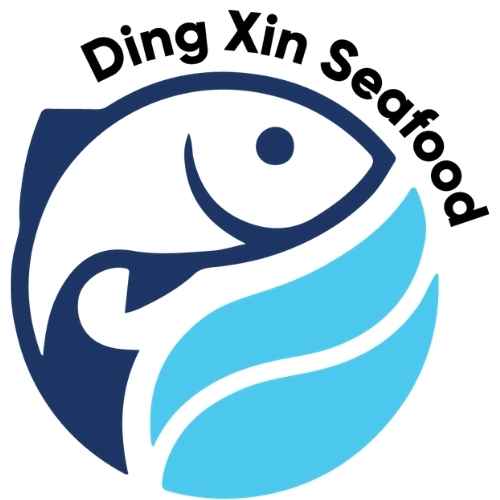It is a common misconception that wild seafood is good, and farm-raised is bad. When it comes to this topic, the answer is not as simple as it seems; each type of fish actually have their own pros & cons, & there are several factors to consider; fishing method, farming method, origin of farm, farming conditions, origin of fish, quality of fish based on their origin, and supply chain management.
Wild-Caught Fish
Origin of Fish & Quality of Fish based on origin:
Generally, the best fish in Singapore are those caught in Malaysia/Indonesia. (excluding cod & salmon which are imported from Europe) We do not buy fish from other parts of Southeast Asia as the ship may have spent much longer coming to Singapore as compared to ships from Indonesia & Malaysia.
Certain places have the best type of fish: for example, Surabaya, Indonesia has the best white pomfrets. Balai, Indonesia has the best threadfin. The best batang are airflown from Malaysia/caught in Malaysia, and many more.
Fishing method:
You can expect the best fish to be those caught from sampans (small boats) as the supply chain management is shorter and the distance from Malaysia to Singapore is short. However, these are more for our angkar prawns & small fish such as the kee yu, yellowtail, etc.
For our big fish, they are brought in by big ships on a near-daily basis. This does not mean that the quality is worse; big ships have a much more thorough and professional supply chain management where the fish will be kept in ice.
Overall, the main thing is distance from Singapore.
Price:
How are prices decided? Why are prices for wild-caught fish so volatile?
Supply and demand is the main factor.
Supply: When ships do not get much returns, prices skyrocket collectively. When ships return with massive hauls, prices are good and everyone is happy.
Demand: During school holiday periods in June/December, demand for seafood is at their all-time low; suppliers quote lower prices to clear their supply. Prices drop. During festive periods such as Chinese New Year, demand for seafood goes through the roof. Prices follow suit.
How are prices now?
Supply is very inconsistent for wild-caught fish due to the recent Lunar 15th & Hari Raya period; prices are rather high. Customers have seen our discounted prices in the latter half of the year, hence it is important to know that prices are seasonal.
It is overall a good and bad thing; during red grouper & threadfin season, prices are so good; customers saw us changing their total from $75/KG to $60/KG or $50/KG easily and comfortably.
Nutritional Value:
Nutrition-wise, wild fish eat a natural diet and tend to be lower in saturated fat than farm-raised varieties.
However, it is clear that wild-caught fish are far superior in nutritional values; look at what is recommended for babies, pregnant women. Cod fish, threadfin, red grouper etc are all wild-caught fish that are extremely nutritious.
My grandparents eat fish almost daily, and they are turning 70 with black hair and only a few strands of white hair. They look like they are barely 60. It is clear that fish is one of the best things to include in a diet.
Farmed Fish:
Origin of Farm & Farming Conditions:
We never buy fish farmed in Vietnam, Thailand, and Singapore (yes, Singapore). This is because Singapore is still new to the farming scene; shallow waters can affect quality of fish as well. As for Vietnam & Thailand, the distance to Singapore is a little too far & that affects quality of fish. Farming conditions are unlikely to be very good; this causes the fish to have a soil smell.
Our farmed fish are from Malaysia, where they are able to farm their fish in deeper waters that the soil smell feedback we used to receive many years ago has stopped. Supply chain management is also excellent, a short distance away from Singapore makes them our top pick for farmed fish.
Our salmon trouts are farmed in Norway's hundreds of deep ice-cold fjords with a stunning 2.5% fish to 97.5% water ratio which is top-tier. These are the same salmon Singapore has been consuming for the last three decades, and the quality only goes up as the supply chain management improves.
Prices:
While prices are going up over the years, we can blame that on inflation; prices as of late are still reasonable and good. (if prices are not good, we won't sell them)
As mentioned before, supply & demand affects prices. A consistent and stable supply results in a very stable price. It is a good and bad thing; prices won't skyrocket, but there won't be seasonal prices where prices can fall drastically.
They are always noticeably much lower than the wild-caught fish because of the consistency in supply; Chinese Pomfret's $30-$45/KG & golden pomfret's $13-$15/KG clearly shows the difference.
Nutritional Value:
Obviously, wild-caught fish are superior in nutritional value. However, fish is fish. Eating farmed fish for one meal compared to eating three meals of pork/chicken already beats the nutritional intake.
Farmed fish can be slightly higher in omega-3 fatty acids than wild-caught fish as well.
Conclusion:
Freshness is key. Wild-caught fish that are not fresh will taste so much worse than a fresh farmed fish. Farmed fish wins in terms of price, but wild-caught fish win in terms of nutritional value. Quality is comparable as long as they are fresh, but generally wild-caught fish are tastier.


